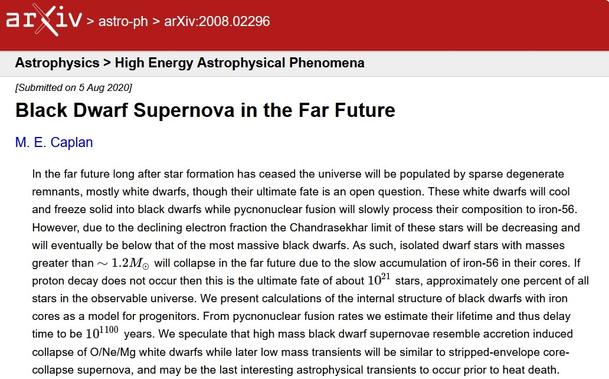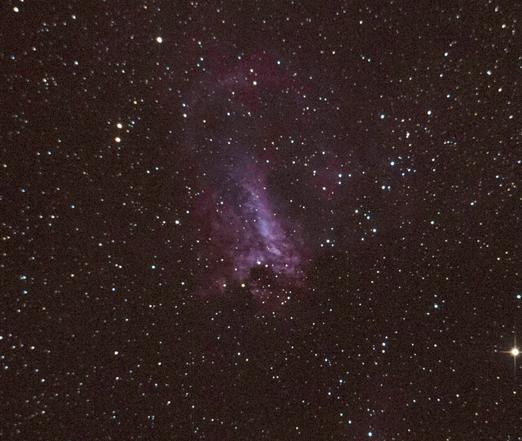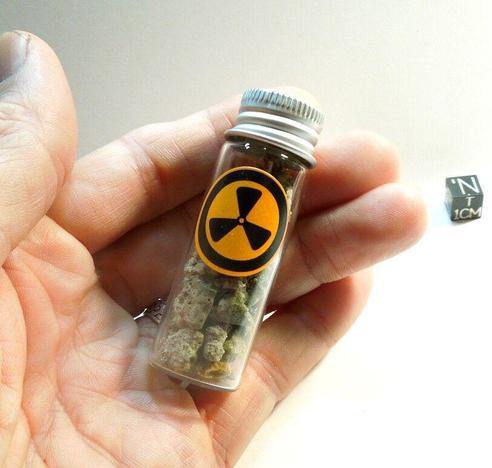You've probably heard the Oasis song Black Dwarf Supernova - but did you know that was a real thing?
More precisely, none exist *now*, but they may be among the last really exciting events in our universe. As a star the size of our Sun dies, it eventually shrink downs to a white dwarf, very hot and dense but held up by 'electron degeneracy pressure'. That's because electrons can't be in the same quantum state.
As a white dwarf cools, we expect it will dim and eventually become a 'black dwarf'. This hasn't happened yet. While there are already plenty of white dwarfs, they take a long time to cool down. The coldest white dwarfs found are about 12 billion years old, and they're still 3,600 °C. We expect that for a white dwarf to get *really* cold, like 5 °C above absolute zero, would take about a quadrillion years!
But before that happens, it could explode.
The reason is that as it cools, its electron degeneracy pressure gets smaller and it shrinks. For white dwarfs heavier than 1.2 times the mass of our Sun, this may actually tip them over into collapsing entirely, becoming black holes. But just as with heavy stars today, this collapse should also liberate a huge amount of energy, shooting off the star's outer layers in a SUPERNOVA!
Stars that could do this account for just 1% of all stars in the observable universe. But that's 10²¹ stars - nothing to sneeze at.
These black hole supernovae may go off around 10¹¹⁰⁰ years from now, long after most other processes have settled down. However, it's possible that the protons in these stars will decay first. Protons could be stable, but we only know for sure that their half-life exceeds 10³² years.


